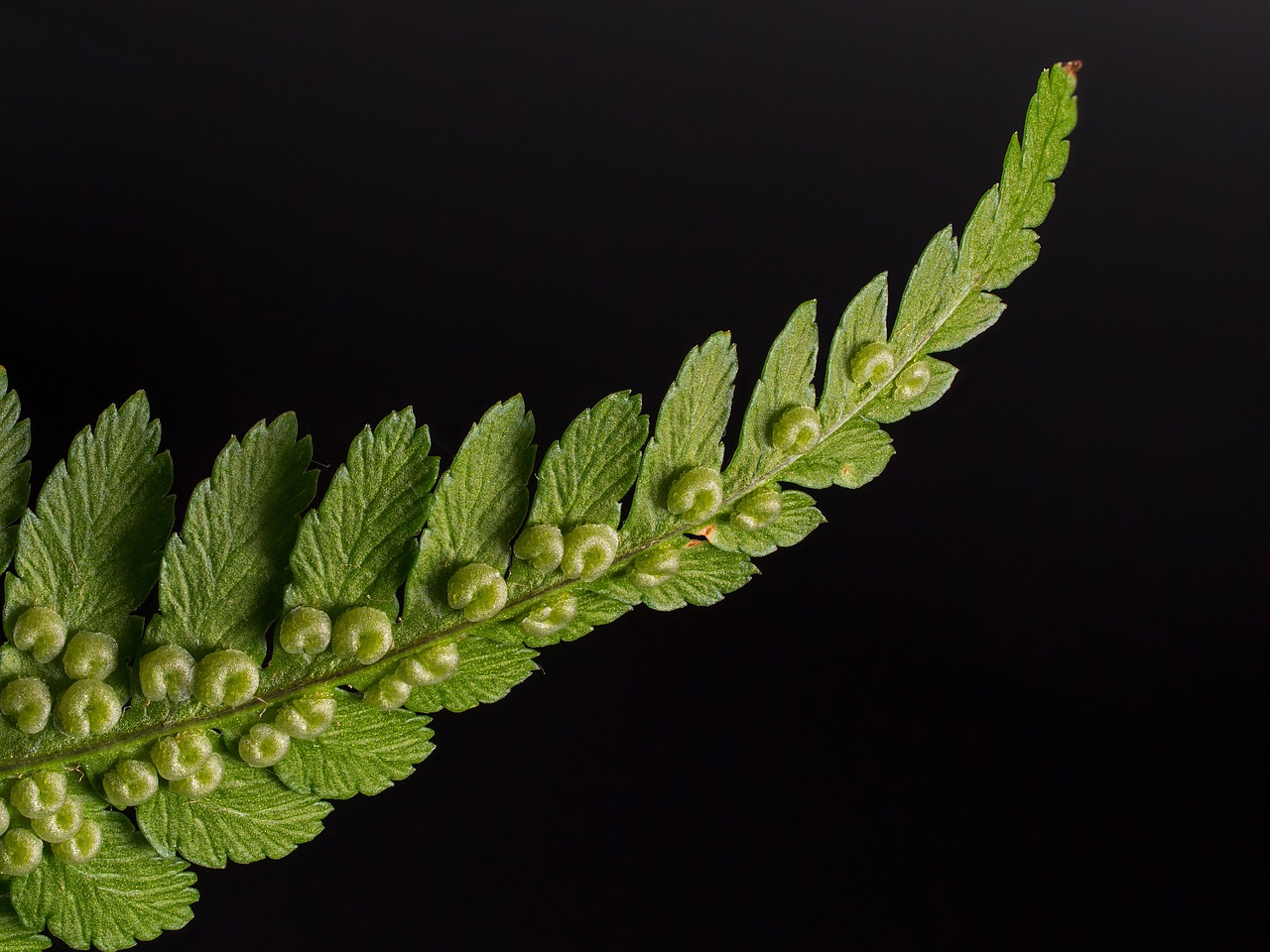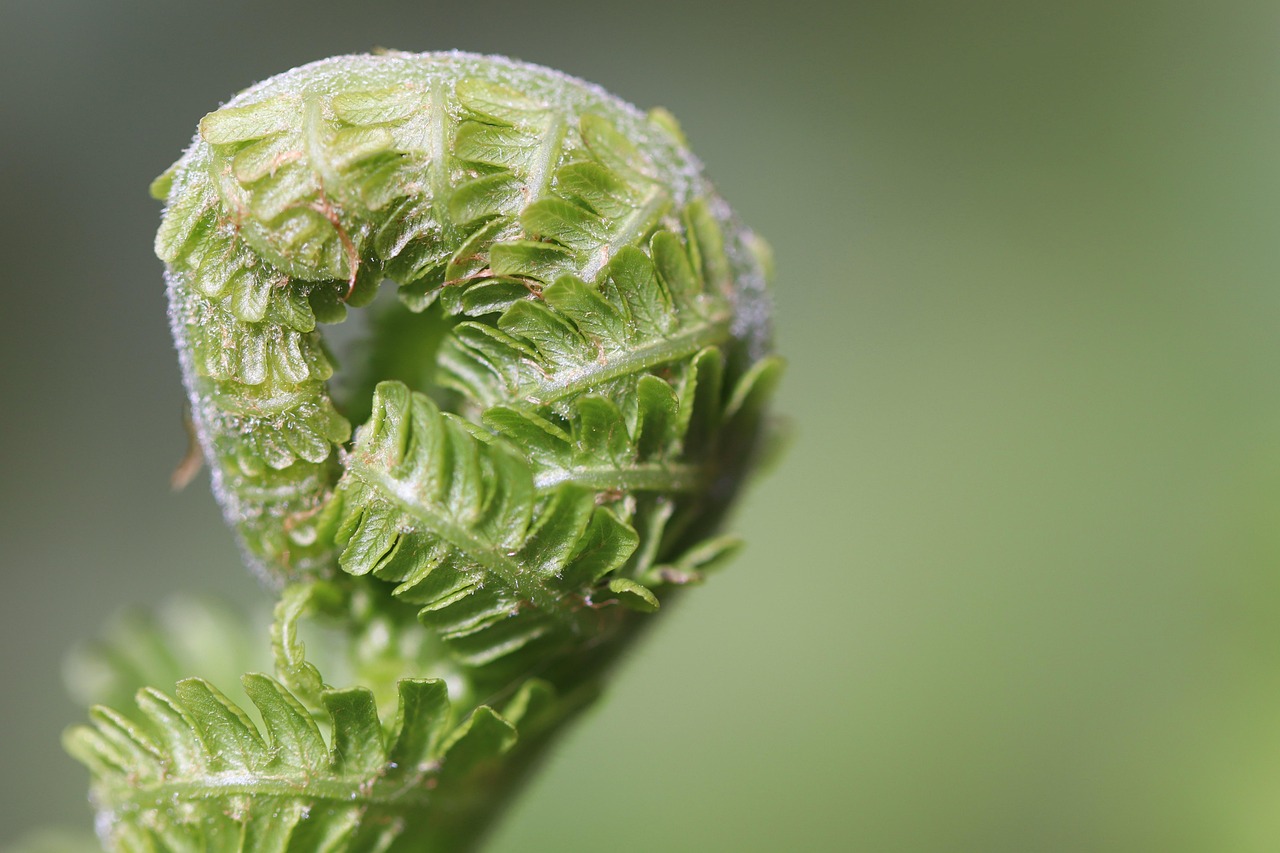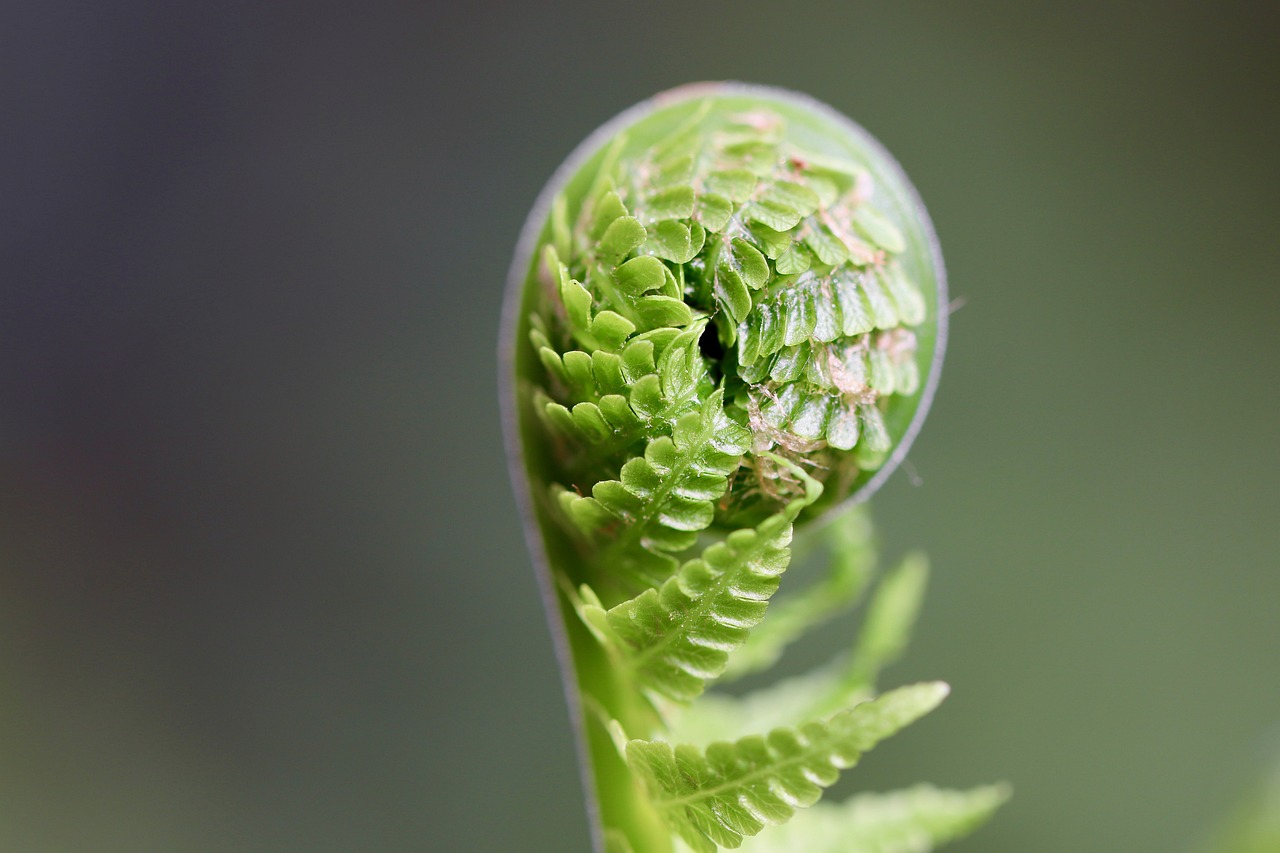Tree ferns typically have a moderate growth rate, averaging 1 to 2 feet per year. This makes them suitable for exotic garden designs, providing lush greenery and a tropical feel. Their growth rate can vary based on species, climate, and care practices.
Understanding Tree Ferns
Tree ferns are ancient plants that belong to the family Cyatheaceae. They are known for their tall, trunk-like stems and feathery fronds. These plants thrive in humid environments and are often found in tropical and subtropical regions. Their unique appearance makes them a popular choice for exotic garden designs, adding a touch of the wilderness to landscaped areas.

The growth rate of tree ferns is influenced by several factors, including species, environmental conditions, and care practices. Understanding these factors can help gardeners create the ideal conditions for their tree ferns to flourish.
Factors Influencing Growth Rate
Several key aspects affect the growth rate of tree ferns:
- Species: Different species of tree ferns exhibit varying growth rates. Some may grow faster than others, so selecting the right species is crucial.
- Climate: Tree ferns thrive in warm, humid climates. Areas with higher humidity levels and consistent rainfall promote faster growth.
- Soil Quality: Well-draining soil rich in organic matter can significantly enhance growth. Poor soil conditions may stunt development.
- Watering Practices: Adequate watering is essential. Tree ferns prefer consistently moist soil but should not be waterlogged.
- Fertilization: Regular fertilization during the growing season can provide necessary nutrients, promoting healthy growth.
Common Species of Tree Ferns
There are various species of tree ferns, each with unique characteristics. Here are some of the most common species used in garden designs:

| Species Name | Common Name | Growth Rate (Feet per Year) | Ideal Conditions |
|---|---|---|---|
| Cyathea australis | Australian Tree Fern | 1 to 2 | Warm, humid environments |
| Dicksonia antarctica | Soft Tree Fern | 1 to 3 | Cool to moderate temperatures |
| Cibotium glaucum | Hapu’u Fern | 2 to 3 | Tropical climates with plenty of rainfall |
| Cyathea medullaris | Black Tree Fern | 1 to 2 | Tropical and subtropical regions |
When selecting a species for your garden, consider both the aesthetic appeal and the specific growth requirements. Some species may be more suitable for certain climates or soil types than others.
Caring for Tree Ferns
Caring for tree ferns involves several practices that promote healthy growth:
- Watering: Ensure the soil remains consistently moist, especially during dry spells.
- Mulching: Apply mulch around the base to retain moisture and regulate soil temperature.
- Pruning: Remove dead fronds periodically to encourage new growth.
- Pest Control: Monitor for pests that may harm the plant and treat infestations promptly.
By understanding the unique needs of tree ferns, gardeners can create stunning exotic gardens that showcase these remarkable plants. With proper care and attention, tree ferns can thrive, providing beauty and elegance to outdoor spaces.

Optimal Conditions for Tree Fern Growth
To maximize the growth rate of tree ferns, it is essential to understand and provide optimal conditions. These plants have specific requirements that, when met, can lead to robust growth and vibrant foliage. The following sections will detail the environmental factors, soil preferences, and watering practices that are crucial for tree fern health.
Environmental Factors
Tree ferns thrive in environments that mimic their natural habitat. The following environmental factors are critical for their growth:
- Temperature: Tree ferns generally prefer temperatures between 60°F to 80°F. Extreme cold can damage the fronds, while excessive heat can stress the plant.
- Humidity: High humidity levels are vital. Ideally, humidity should be above 50%. Using a humidity meter can help monitor levels.
- Light Exposure: Tree ferns do well in filtered sunlight. Direct, harsh sunlight can scorch the fronds, so consider partial shade when planting.
- Wind Protection: Strong winds can damage the fronds and disrupt moisture levels. Planting near a windbreak or in a sheltered area can help.
Soil Requirements
The right soil composition is crucial for healthy tree fern growth. Tree ferns prefer well-draining soil rich in organic matter. Here are some recommendations for soil preparation:
- Soil Type: A mix of potting soil, peat moss, and perlite or sand can create an ideal growing medium.
- pH Level: Tree ferns thrive in slightly acidic to neutral pH levels (between 5.5 and 7.0). Testing the soil pH can guide amendments.
- Organic Matter: Incorporating compost or well-rotted manure into the soil can provide essential nutrients and improve moisture retention.
Watering Practices
Watering is a critical aspect of caring for tree ferns. Here are some effective watering strategies to ensure their health:

- Frequency: Water tree ferns consistently to keep the soil moist but not soggy. A deep watering once a week is often sufficient, depending on weather conditions.
- Water Quality: Use rainwater or distilled water when possible. Tap water containing high salts or chemicals can harm tree ferns over time.
- Watering Technique: Water at the base of the plant to avoid wetting the fronds excessively. This helps prevent fungal diseases.
Common Pests and Diseases
Tree ferns can be susceptible to certain pests and diseases that may hinder their growth. Being aware of potential threats helps in early detection and management:
Pests
- Aphids: Small insects that can sap nutrients from the plant. Regular inspection and insecticidal soap can control infestations.
- Scale Insects: These pests appear as small bumps on the fronds. They can be managed with horticultural oil or by manual removal.
- Spider Mites: These tiny pests thrive in dry conditions. Increasing humidity and applying neem oil can help eliminate them.
Diseases
Diseases often arise from improper care or environmental stressors. Common issues include:
- Root Rot: Caused by overwatering or poorly draining soil. To prevent this, ensure proper drainage and avoid waterlogging.
- Fungal Infections: High humidity and poor air circulation can lead to fungal issues. Ensure good spacing between plants and prune dead fronds regularly.
Cultivating Tree Ferns in Different Settings
Tree ferns can be cultivated in various settings, including gardens, containers, and indoors. Each setting has its unique considerations.
Garden Settings
In garden settings, tree ferns can be planted directly in the ground or arranged in beds. When planting:
- Select a location that receives filtered light.
- Avoid overcrowding by allowing enough space for growth.
- Add mulch around the base to retain moisture and suppress weeds.
Container Gardening
Container gardening offers flexibility and control over growing conditions. When growing tree ferns in pots:
- Choose large containers with drainage holes.
- Use a lightweight potting mix combined with organic matter.
- Ensure regular monitoring of moisture levels, as pots can dry out quickly.
Indoor Cultivation
Cultivating tree ferns indoors requires specific care for humidity and light:
- Place indoor tree ferns near bright, indirect light sources.
- Use a humidifier or mist the fronds regularly to maintain humidity.
- Rotate the plant occasionally to promote even growth.
By understanding how to create optimal conditions for tree ferns, gardeners can enjoy the beauty of these exotic plants while enhancing their outdoor spaces.
Enhancing Tree Fern Growth with Companion Plants
Companion planting is a gardening technique that involves growing different plants together for mutual benefits. Incorporating companion plants with tree ferns can enhance their growth, improve soil health, and create a more vibrant garden ecosystem. Here are some companion plants that work well with tree ferns:
Beneficial Companion Plants
- Hostas: These shade-loving perennials thrive in similar conditions as tree ferns. Their lush foliage complements the fronds of tree ferns beautifully.
- Astilbes: These flowering plants enjoy moist soil and partial shade, making them excellent companions for tree ferns.
- Japanese Forest Grass (Hakonechloa macra): This ornamental grass adds texture and color, thriving in the same humidity and light conditions.
- Heucheras: Known for their colorful foliage, these plants adapt well to shady areas and enhance the aesthetic appeal of the garden.
Creating a Balanced Ecosystem
When planting tree ferns with companions, consider the following tips to create a balanced ecosystem:
- Spacing: Ensure adequate spacing between plants to allow air circulation and light penetration.
- Soil Compatibility: Choose companion plants that have similar soil requirements to avoid competition for nutrients.
- Diversity: Incorporate a variety of plants to attract beneficial insects and pollinators, enhancing overall garden health.
The Role of Mulching in Tree Fern Care
Mulching is an essential practice for maintaining healthy tree ferns. It provides numerous benefits that contribute to their growth and overall well-being.
Benefits of Mulching
- Moisture Retention: Mulch helps retain soil moisture, reducing the frequency of watering needed.
- Weed Suppression: A thick layer of mulch can prevent weeds from taking root, minimizing competition for nutrients and space.
- Temperature Regulation: Mulch insulates the soil, helping to maintain consistent temperatures, which is beneficial for root health.
- Nutrient Enrichment: Organic mulches, such as shredded leaves or bark, break down over time, adding nutrients to the soil.
Types of Mulch
Selecting the right type of mulch is important. Here are some options suitable for tree ferns:
| Type of Mulch | Description | Benefits |
|---|---|---|
| Bark Mulch | Made from shredded bark or wood chips. | Long-lasting, retains moisture effectively. |
| Leaf Mulch | Composed of shredded leaves. | Adds nutrients as it decomposes, lightweight. |
| Pine Needles | Acidic mulch from pine trees. | Good for acid-loving plants and provides excellent moisture retention. |
| Cocoa Hulls | Byproduct of cocoa processing. | Aesthetic appeal and pleasant smell; however, be cautious if pets are present due to toxicity. |
Seasonal Care for Tree Ferns
Caring for tree ferns varies throughout the seasons. Understanding seasonal needs helps ensure their vitality year-round.
Spring Care
As tree ferns emerge from dormancy in spring, focus on the following:
- Fertilization: Apply a balanced fertilizer to promote new growth.
- Pest Inspection: Check for pests that may have overwintered and address any issues promptly.
- Irrigation: Increase watering as temperatures rise and growth resumes.
Summer Care
During summer, maintaining moisture is crucial. Consider these practices:
- Consistent Watering: Ensure regular watering during dry spells to prevent stress on the plants.
- Shade Management: Provide shade cloth if necessary to protect from excessive heat or sun exposure.
Fall Care
As temperatures cool in fall, prepare tree ferns for winter:
- Reduce Watering: Gradually decrease watering as growth slows down.
- Add Mulch: Apply a fresh layer of mulch to protect roots from winter chill.
Winter Care
In winter, protecting tree ferns is essential:
- Frost Protection: In colder climates, consider providing frost protection such as burlap or frost cloth.
- Avoid Overwatering: Ensure the soil dries out slightly between waterings to prevent root rot during dormancy.
By understanding seasonal care practices, gardeners can help tree ferns thrive throughout the year while enhancing their exotic garden designs.
Tree Ferns in Exotic Garden Designs
Tree ferns are not just beautiful; they play a vital role in creating lush, exotic garden designs. Their unique structure and vibrant foliage add a tropical ambiance to any landscape. When planning an exotic garden, it is essential to consider how tree ferns can complement other plants and features.
Designing with Tree Ferns
Incorporating tree ferns into your garden design requires thoughtful planning. Here are some key considerations:
- Layering: Use tree ferns as a backdrop for shorter plants. Their height can create depth in the garden, making the space feel more expansive.
- Contrast: Pair tree ferns with plants that have different textures or colors. For example, combining the feathery fronds of tree ferns with broad-leaved plants can create stunning visual contrasts.
- Pathways: Position tree ferns along pathways or in entryways to guide visitors through the garden while providing a sense of enclosure.
- Water Features: Consider planting tree ferns near water features, such as ponds or streams. Their natural habitat is often near moisture-rich environments, enhancing their growth and appearance.
Maintenance for a Thriving Garden
Continuous maintenance is crucial for ensuring the longevity and vitality of tree ferns in an exotic garden setting. Regular check-ups can help identify issues early on. Here are some maintenance tips:
- Regular Fertilization: Use slow-release fertilizers during the growing season to provide essential nutrients.
- Pest Monitoring: Frequently inspect tree ferns for pests and diseases. Early intervention can prevent larger infestations.
- Seasonal Pruning: Prune back any dead or damaged fronds to encourage healthy growth and enhance the overall appearance.
Using Tree Ferns in Diverse Climates
Tree ferns can adapt to various climates when proper care is taken. Understanding their needs in different environmental conditions allows gardeners to successfully cultivate these plants:
- Tropical Climates: In these areas, tree ferns can thrive with minimal intervention. Ensure they receive adequate shade and moisture.
- Temperate Climates: Provide frost protection during winter months and maintain consistent moisture levels throughout the year.
- Arid Regions: While tree ferns typically prefer humidity, they can be grown in controlled environments like greenhouses where humidity levels can be maintained.
Conclusion
Tree ferns are remarkable plants that contribute significantly to exotic garden designs. Their growth rate, environmental needs, and compatibility with various companion plants make them a versatile choice for any gardener. By understanding how to cultivate and care for tree ferns, gardeners can create stunning landscapes that evoke the beauty of tropical environments.
The key takeaways for successfully integrating tree ferns into your garden include:
- Understanding their growth habits and environmental preferences.
- Selecting appropriate companion plants that will thrive alongside them.
- Implementing consistent care practices throughout the seasons to ensure health and vitality.
- Utilizing design principles that enhance their natural beauty within the garden setting.
With proper attention and care, tree ferns can thrive and become a focal point in any exotic garden design, providing beauty, texture, and a sense of tranquility to outdoor spaces.
